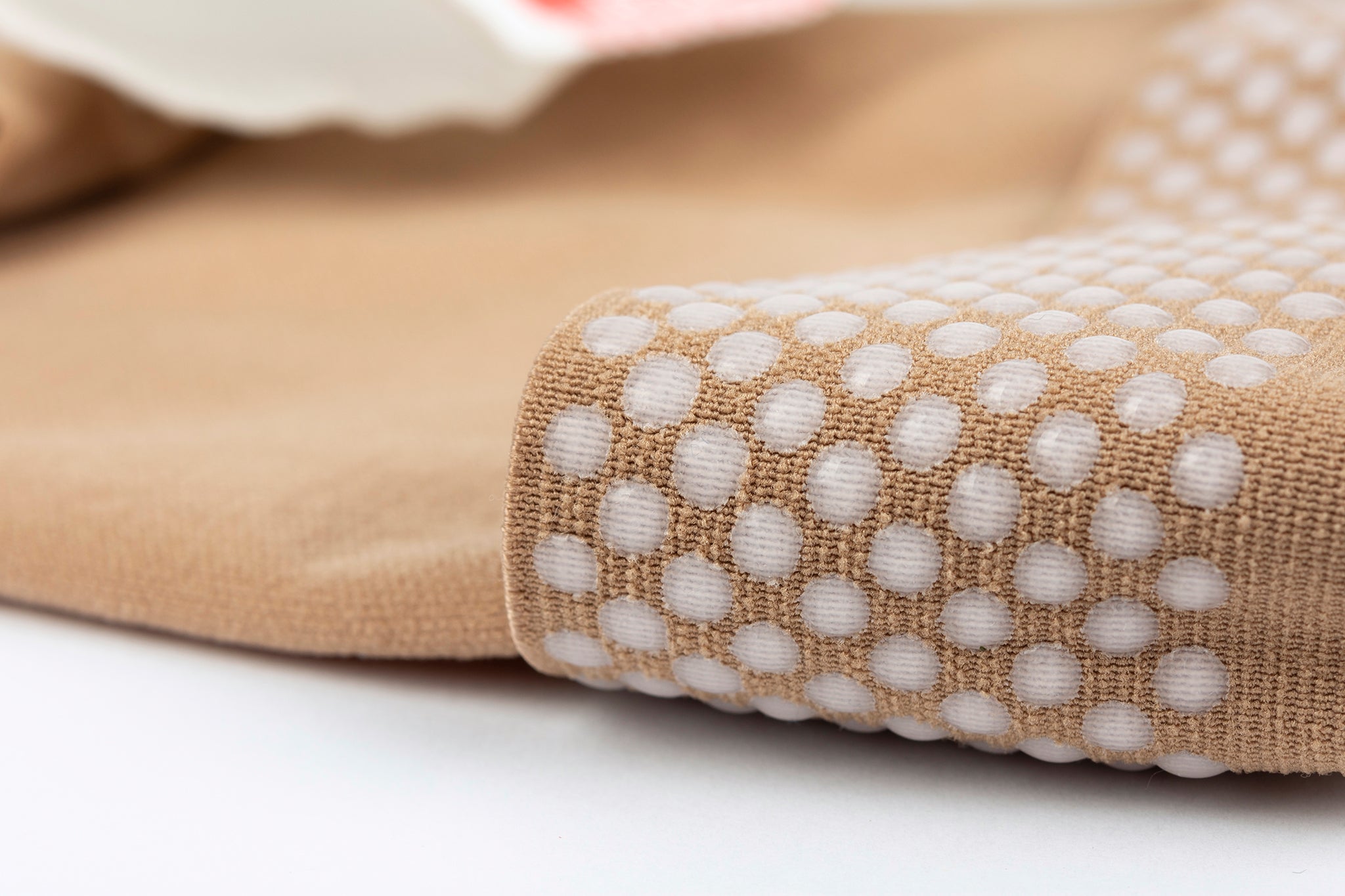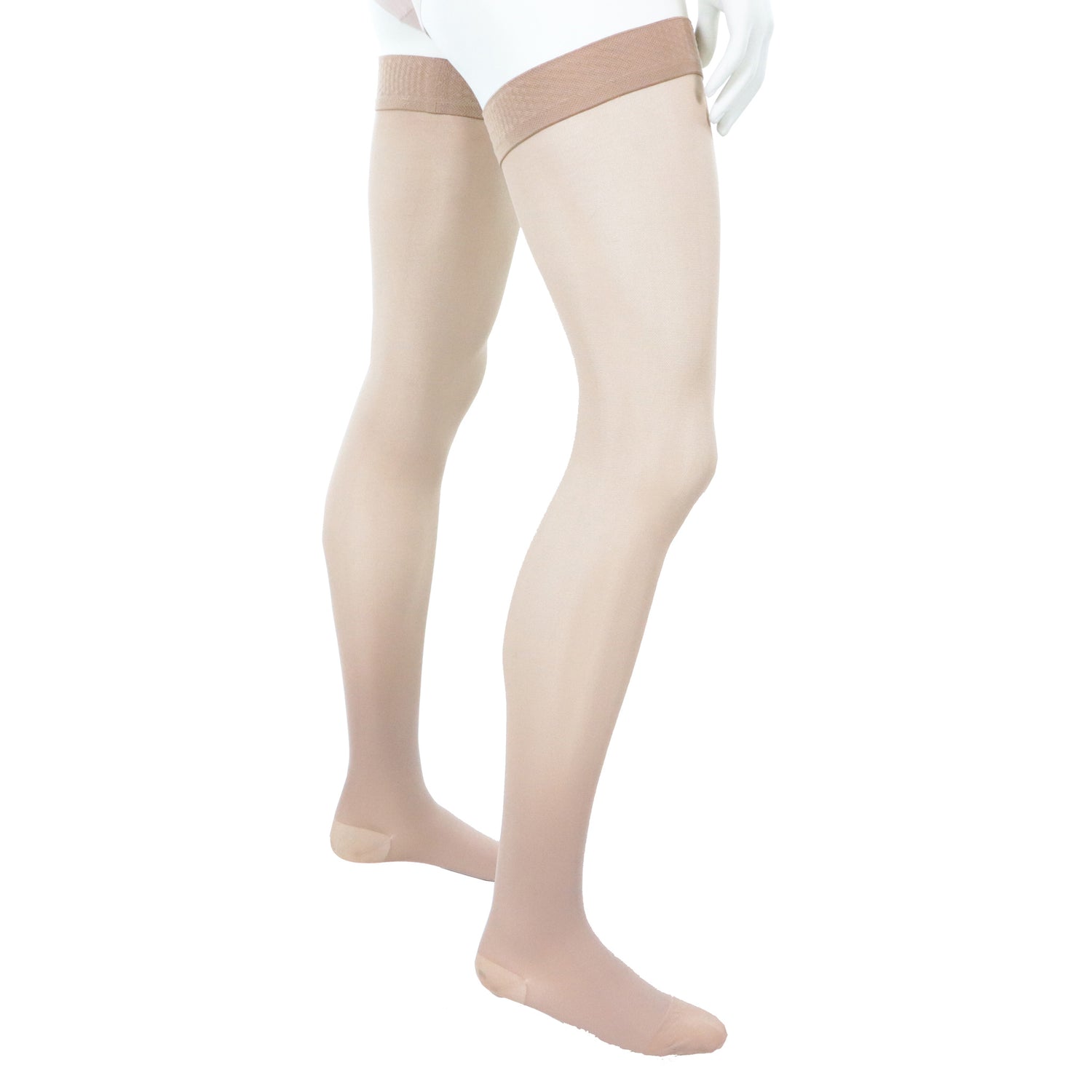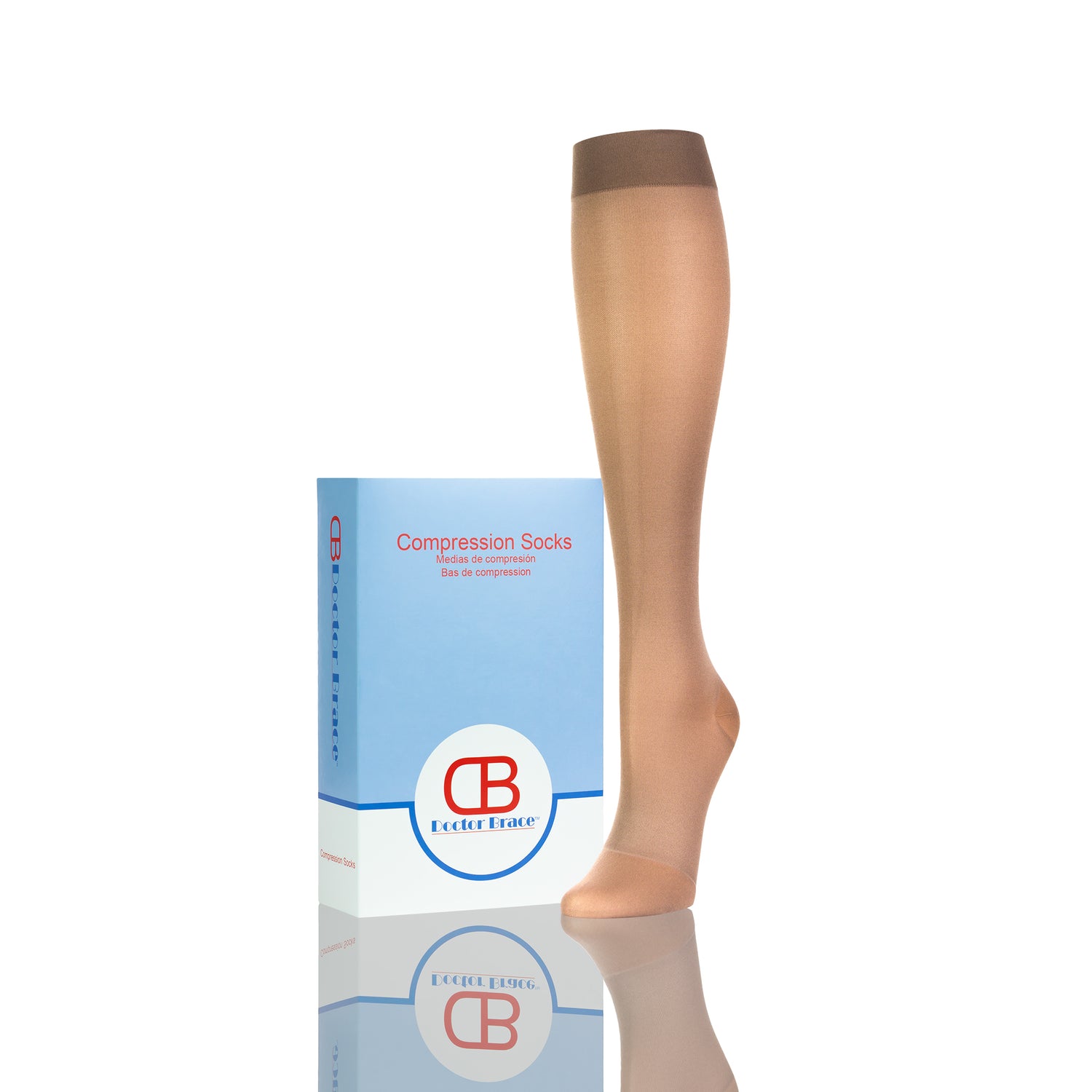Overview
If used correctly, compression stockings for medical use can bring several benefits to women or men suffering from chronic venous insufficiency, varicose veins, etc.
But, if they are poorly chosen or badly used, side effects may appear or be felt, such as discomfort, redness, or other undesirable consequences.
That's why we prepared this article!
It discusses how compression socks can cause side effects and how to avoid them.
What are compression socks used for?
How do compression socks work?
Compression socks have a particular compression fabric. It gently presses on the veins in the leg affected by venous insufficiency to help them return blood to the heart.

So, support socks will partly mimic the calf muscles. They reproduce the movements of these muscles, weakened by poor blood circulation, by pumping the blood to the top of the body.

In conclusion, compression stockings will act like a pump to push the blood against gravity, starting from the legs.
Do compression socks work?
The answer is Yes!
Healthcare professionals commonly prescribe compression socks to treat the symptoms of chronic venous insufficiency.

They also help to slow down complications such as varicose veins, superficial phlebitis, or other venous diseases.
But, for this to work well, patients must meet all the technical specifications recommended by their doctor, including:
- Compression grading: Measured compression stockings are divided into three grades of compression. Their intensity is measured in millimeters of mercury (mmHg). These grades are: 15 20 mmHg, 20 30 mmHg and 30 40 mmHg
- Length: this will depend on the part of the leg affected by varicose veins or another circulatory problem. The doctor may prescribe a calf, thigh, or pantyhose compression stocking
Also, to maximize the benefits of compression socks, they should be worn daily, from morning until night, and washed after each use.
What are compression socks good for?
In general, compression stockings are used in the following situations:
- To recover after physical activity, such as running
- In airplanes, to prevent the legs from swelling or to prevent a pulmonary embolism on long flights
- To treat numbness or heaviness in the legs
- To deflate leg edema
- To avoid the aggravation of varicose veins
Compression socks are also used in the treatment of phlebitis or deep vein thrombosis.
Can wearing compression socks be harmful?
As with any other medical product, the misuse of compression socks can sometimes lead to side effects.
This may happen if they are not used as prescribed or if the manufacturer's contraindications are not followed.
Too, wearing poor-quality compression stockings can lead to undesirable consequences such as:
- Irritation
- Edema, or other more severe complications
When and why may side effects of wearing compression stockings occur?
1. If they are too tight
Compression socks that are too tight in the ankles, calves, or thighs, can cause irritation or even sores.
Before buying them, take your compression stockings measurements according to the manufacturer's sizing chart.
A measured compression stocking with an accurate size should fit the wearer's leg without being too tight.
That said, it shouldn't be too loose, either.
2. If the compression level is not good
The level of compression to use is the top criterion to consider when choosing your compression socks, especially for medical use.
Wearing stockings with lighter compression may result in less effective therapy. For example, this can compromise compression socks benefits when treating chronic venous insufficiency.
Also, more intense compression fabric can lead to severe complications. They can occur in people with heart problems or chronic illnesses.
3. If compression socks length does not suit the patient's needs
Choosing the correct compression socks length is as important as selecting the compression grade.
The patient can wear knee-high compression socks if the varicose veins or leg swelling are localized only in the ankle and calf.

If it is above the knee, she should wear thigh-high stockings.

Wearing shorter-than-expected compression stockings may compromise the treatment of whole-leg venous insufficiency.
4. If you don't wear them correctly
Wearing compression socks as prescribed allows you to distribute the compression fabric evenly. Besides, it offers better comfort.
Users who wear their stockings incorrectly will often end up with pleated or gathered fabric in certain leg areas.
Wrinkled compression fabric in medical compression grades, such as 20 30 mmHg or 30 40 mmHg, can cause:
- Irritation
- Redness
- Or even swelling in the legs
5. If the fabric contains materials that are not suitable for the user's skin
When you have varicose veins or chronic venous insufficiency, you should wear your compression stockings daily, from morning to evening, without exception.
Thus, wearing socks with a breathable, hypoallergenic, and soft fabric becomes essential.
Compression socks made with poor-quality materials may cause discomfort, redness, allergic skin reactions, eczema, or irritation.
To accommodate all types of skins, socks made by recognized brands are available in several fabrics, such as:
- Mixed fibers
- Natural fibers such as cotton or merino wool
- Latex-free, etc.
What are the side effects of wearing compression socks?
Some of the side effects that can be caused by improper wearing of compression stockings include:
- Discomfort
- Skin irritations
- Redness
- Edema in the legs
- Wounds, etc.
Tips to avoid side effects of wearing compression stockings
Here are some tips to prevent side effects related to the incorrect use of compression socks:
- Choose compression stockings made by recognized brands, such as Doctor Brace
- Be sure to take your measurements and pick the right size
- Choose the right level of compression
- Go for socks of the right length
- Use donning gloves to put on your compression stockings correctly. Doing so will help to spread the compression fabric across the leg evenly
- As possible, wear a stocking made of soft fibers
In summary
Putting on compression stockings can bring several benefits to its user.
They help to overcome the symptoms of chronic venous insufficiency. They also help to slow the progression of varicose veins or superficial phlebitis in the legs, etc.
But, incorrectly used, poorly chosen, or poor-quality compression socks can be harmful. It can engender side effects.
Side effects of wearing compression stockings are often caused by:
- Tight stocking
- Wrong compression class or length
- Or inappropriate materials.
As a solution, always choose the compression socks best suited to your morphology and needs to prevent side effects. This will also help maximize their therapeutic use.
Article last updated: April 10, 2024.





